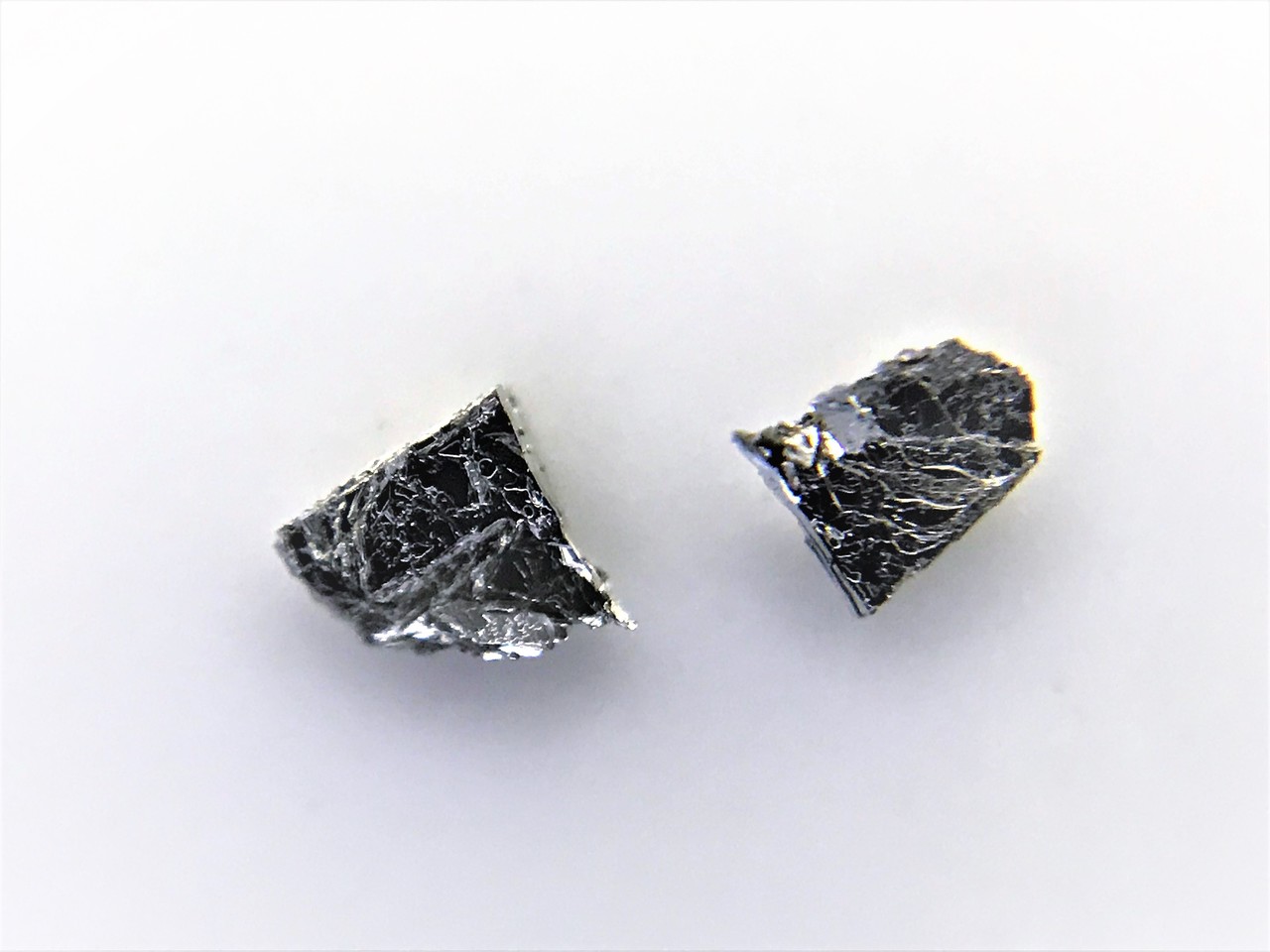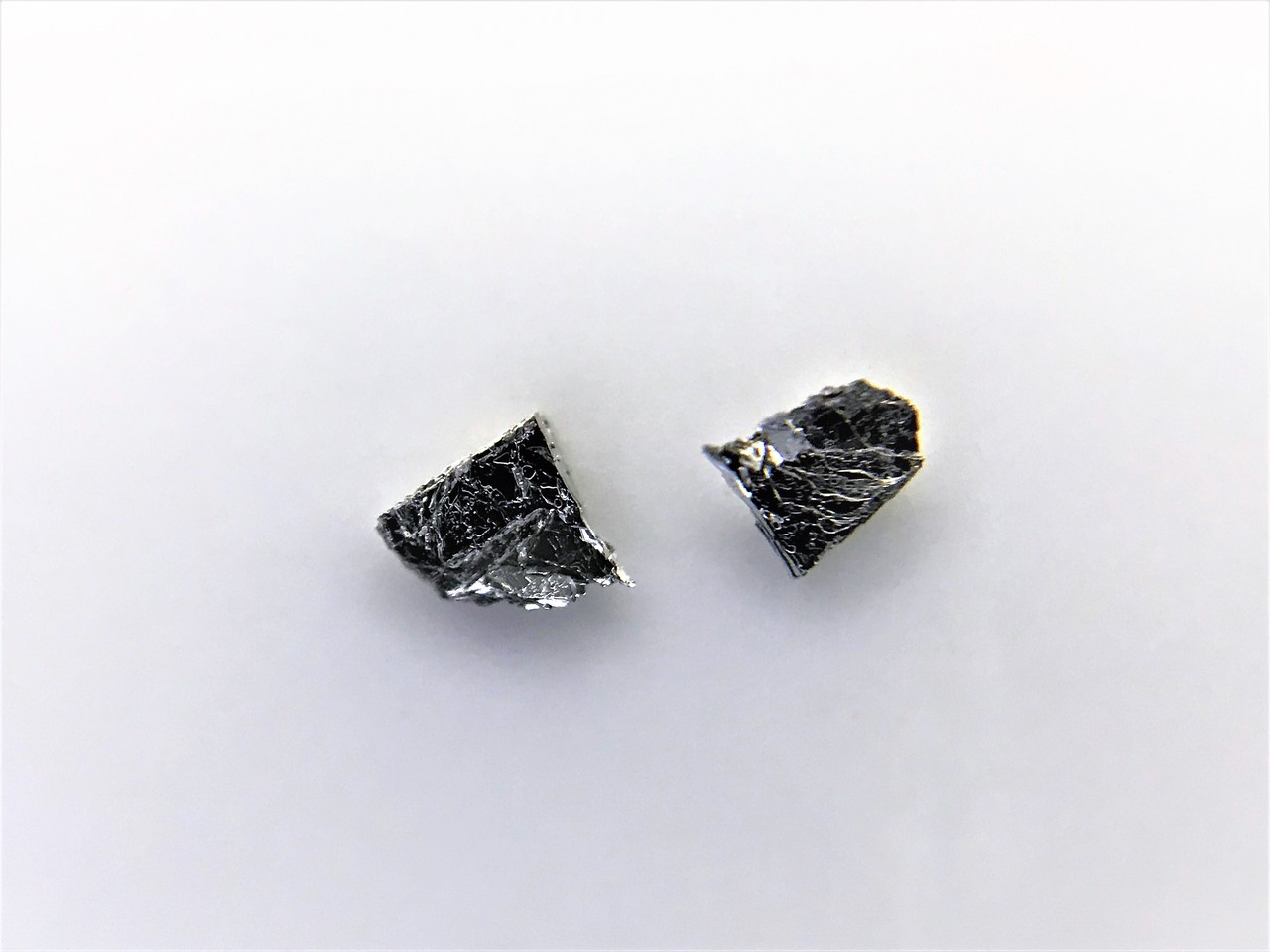PdTe2 (palladium ditelluride) is vdW layered metal crystallizing in hexagonal phase structure. It exhibits superconductivity below 2K in bulk topological predicted response. Our PdTe2 crystals are the only commercial crystals that does not suffer from oxidization due to low defect concentrations (see Raman spectrum). PdTe2 crystals exhibit extraordinary crystallinity with extremely low defect concentrations as low as 1E9 cm-2 levels. The presence of defects are well-known cause for reduced topological and superconducting responses, as well as higher resistance. Considering these, PdTe2 crystals are synthesized through flux zone growth but our R&D can also offer chemical vapor transport (CVT) grown crystals with larger amount of defects and lower crystallinity.
Growth method matters> Flux zone or CVT growth method? Contamination of halides and point defects in layered crystals are well known cause for their reduced electronic mobility, reduced anisotropic response, poor e-h recombination, low-PL emission, and lower optical absorption. Flux zone technique is a halide free technique used for synthesizing truly semiconductor grade vdW crystals. This method distinguishes itself from chemical vapor transport (CVT) technique in the following regard: CVT is a quick (~2 weeks) growth method but exhibits poor crystalline quality and the defect concentration reaches to 1E11 to 1E12 cm-2 range. In contrast, flux method takes long (~3 months) growth time, but ensures slow crystallization for perfect atomic structuring, and impurity free crystal growth with defect concentration as low as 1E9 - 1E10 cm-2. During check out just state which type of growth process is preferred. Unless otherwise stated, 2Dsemiconductors ships Flux zone crystals as a default choice.
The properties of PdTe2 crystals





联系人:严春伟
手机:13914543285
电话:0523-86190619,86192878
邮箱:taizhou@sunano.com.cn
地址: 江苏省泰州市凤凰西路168号